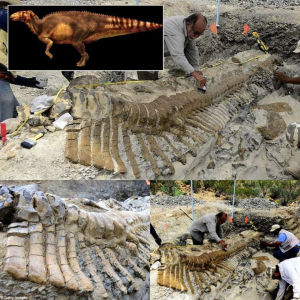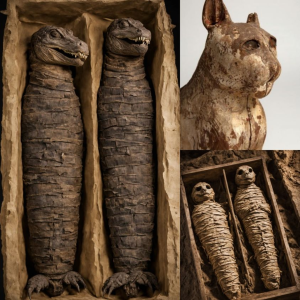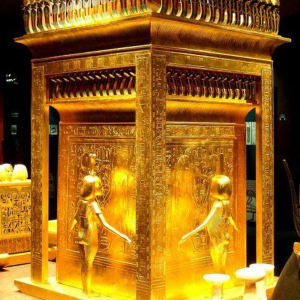Timeless Seduction: Unveiling the Ancient Roman Mosaic of Leda and the Swan from the Sanctuary of Aphrodite in Cyprus
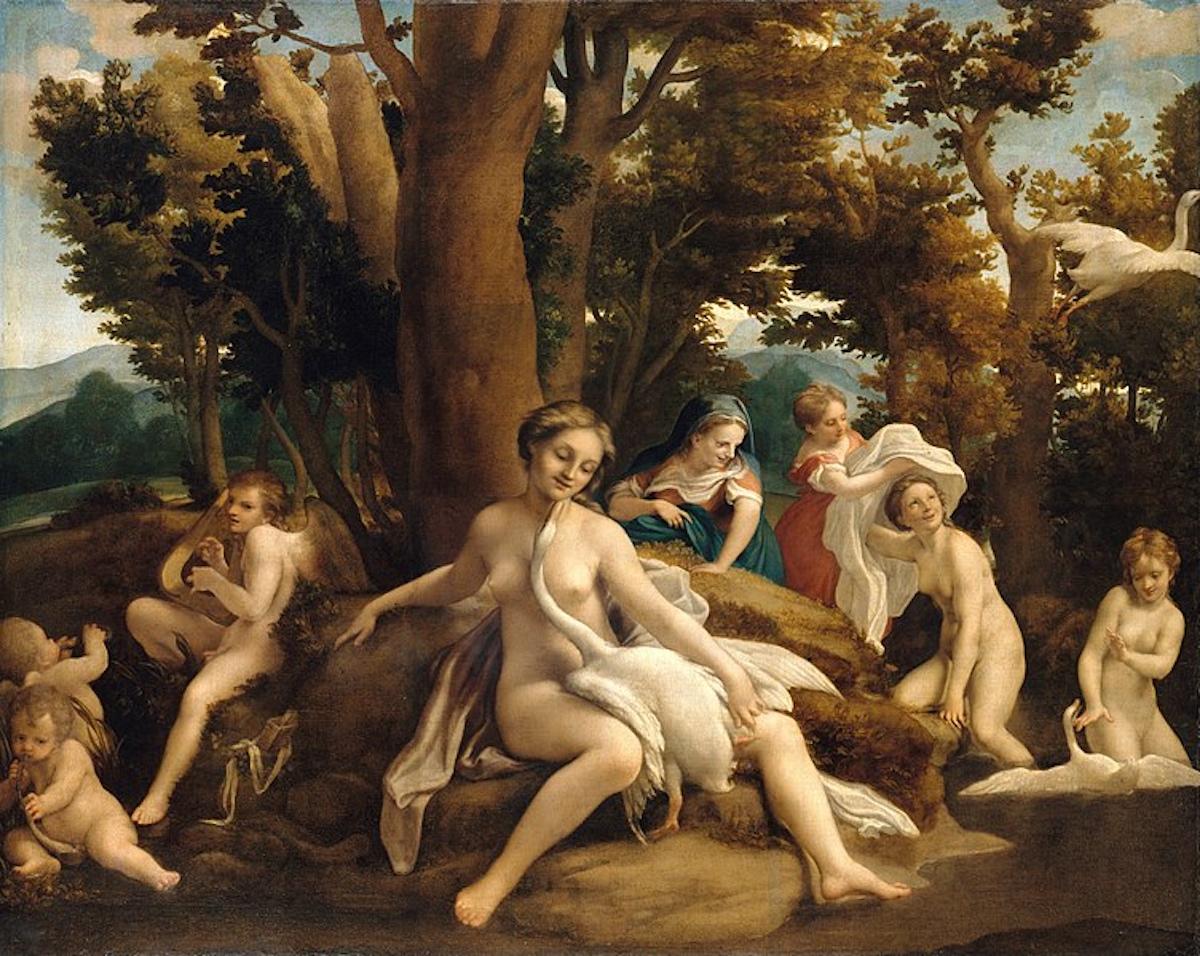
Antonio da Correggio, Leda and the Swan, 1532, oil on canvas, 156.2 × 217.5 cm (61.5 x 85.6 in). Gemäldegalerie, Berlin
“Leda and the Swan,” a sonnet by W. B. Yeats, begins: “A sudden blow: the great wings beating still/Above the staggering girl, her thighs caressed/By the dark webs, her nape caught in his bill, /He holds her helpless breast upon his breast.” This moment of sexual violation inflicted on Leda by the god Zeus has inspired painters and sculptors for centuries.
Zeus, the god of sky and thunder, was known as the king and father of the gods. According to the Greek myth, when Zeus saw Leda, a beautiful human and wife of King Tyndareus of Sparta, he became enamored and obsessed. Zeus transformed himself into a magnificent swan to ‘seduce’ Leda. That same night, she also slept with her husband. She ultimately fell pregnant with children from both men and eventually gave birth to two eggs. From these eggs hatched four children: two sets of twins. Two carried Zeus’s blood and two carried the King’s. One of Zeus’s offspring is a boy, named Pollux. His twin sister became Helen of Troy, whose beauty caused the Trojan War.
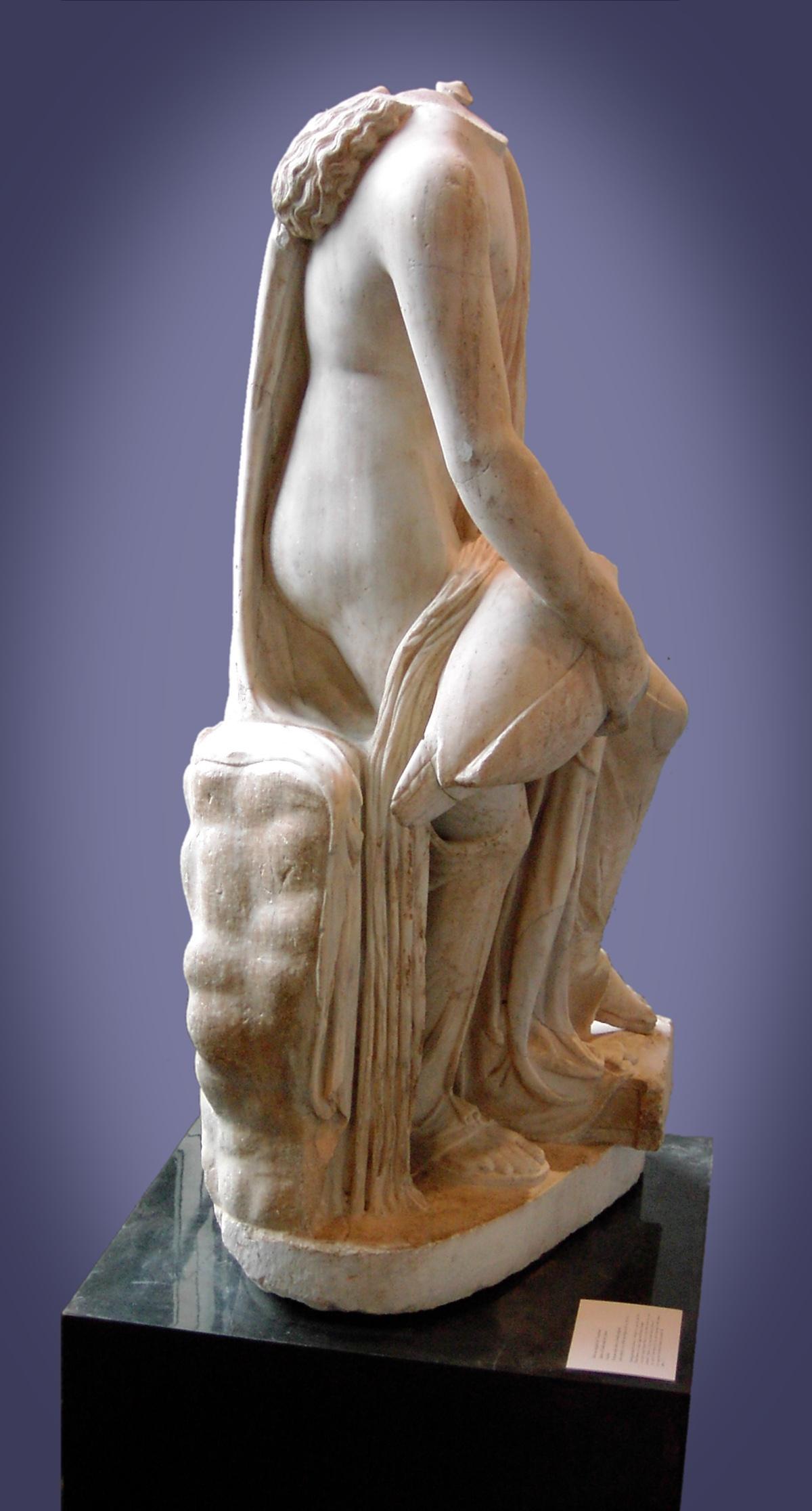
Anonymous (Roman, 2nd century A.D.), after Timotheos (ca. 370 BC). Leda and the Swan. Marble. New Haven, Yale University Art Gallery
What we know about the Trojan War straddles myth and history.
The rape of Leda by Zeus was believed to have not only led to this great war, but also to the Golden Age of Greece, opening the way to the modern age of art, literature, and democracy. Also known as the Classical Age, fifth to fourth centuries BCE, Greece flourished during this time under the rule of Alexander the Great, whose tutor was Aristotle. Greek theatre, the Olympic Games, as well as democracy were creations of the Golden Age.
In 353 BCE, Timotheos, a Greek sculptor, used Leda and the Swan as the subject of his art. The Greek myth was well-known throughout the Middle Ages and became especially popular during the Italian Renaissance. Spanning the fifteenth and sixteenth centuries, Renaissance Erotica produced many works by famous artists depicting a woman copulating with a swan. This rendition was more acceptable than showing a man and woman having sex.
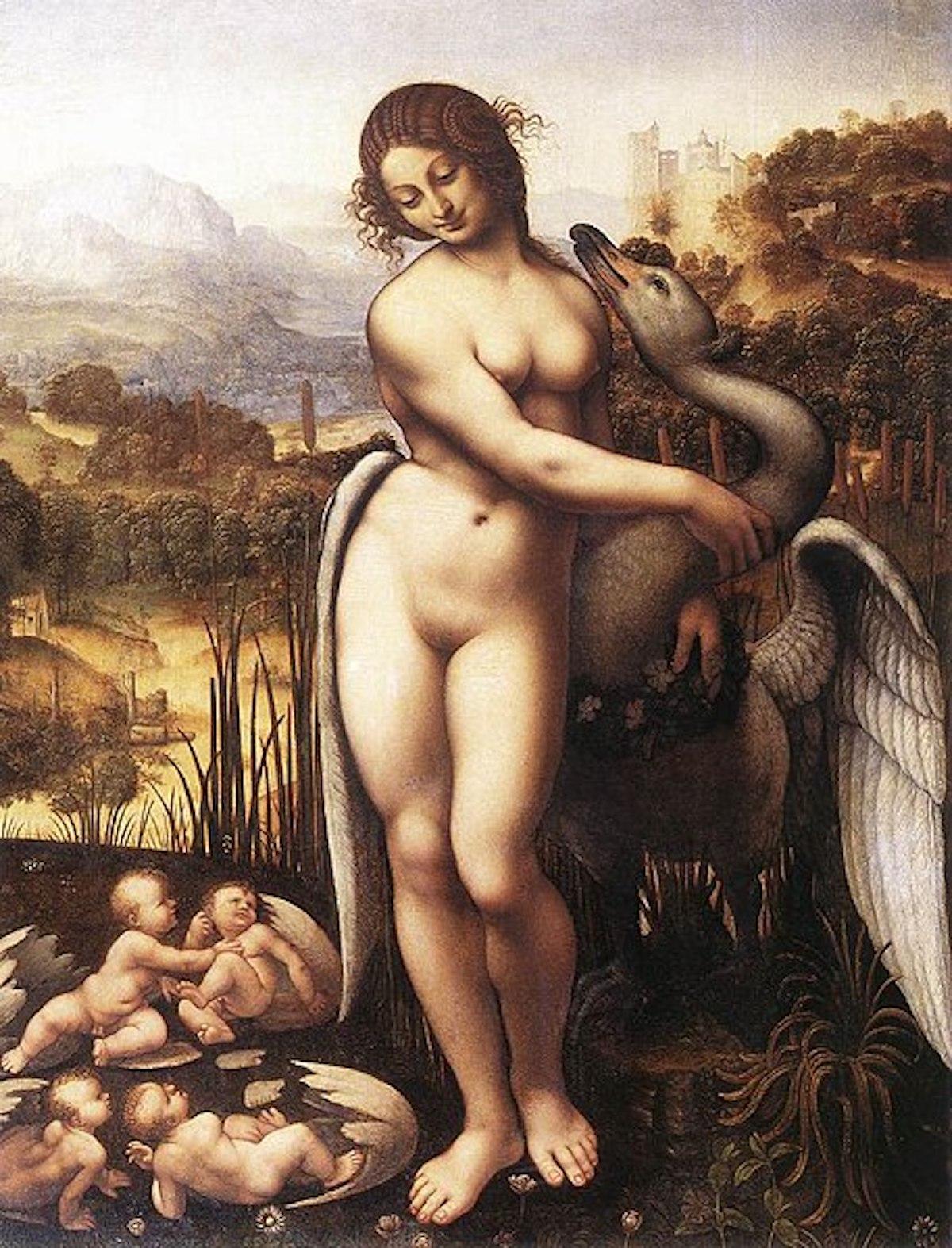
Cesare da Sesto after Leonardo da Vinci, Leda and the Swan, 1505-10, oil on panel
According to the art historian Giorgio Vasari, Michelangelo was commissioned to paint the myth for Alfonso, Duke of Ferrara. It was painted in tempera on a square canvas in 1530. But when Alfonso declared the painting as a “little thing,” Michelangelo refused to hand it over. Since then, the painting has been lost but many copied his work. The most famous copy hangs in the National Gallery. Cornelis Bos made an engraving, 1544-66, also after Michelangelo. The engraving is now in the Met.
Leonardo da Vinci made studies in 1504 for a painting, showing Leda sitting on the ground with her children. In 1508, he painted Leda cuddling the swan, with their two sets of infant twins just hatched from their broken egg shells. The painting was soon destroyed but there still remain many copies. Raphael and Correggio also painted the myth. Lorenzo de Medici commissioned a reclining Leda carved into a Roman sarcophagus, and into an antique gem.
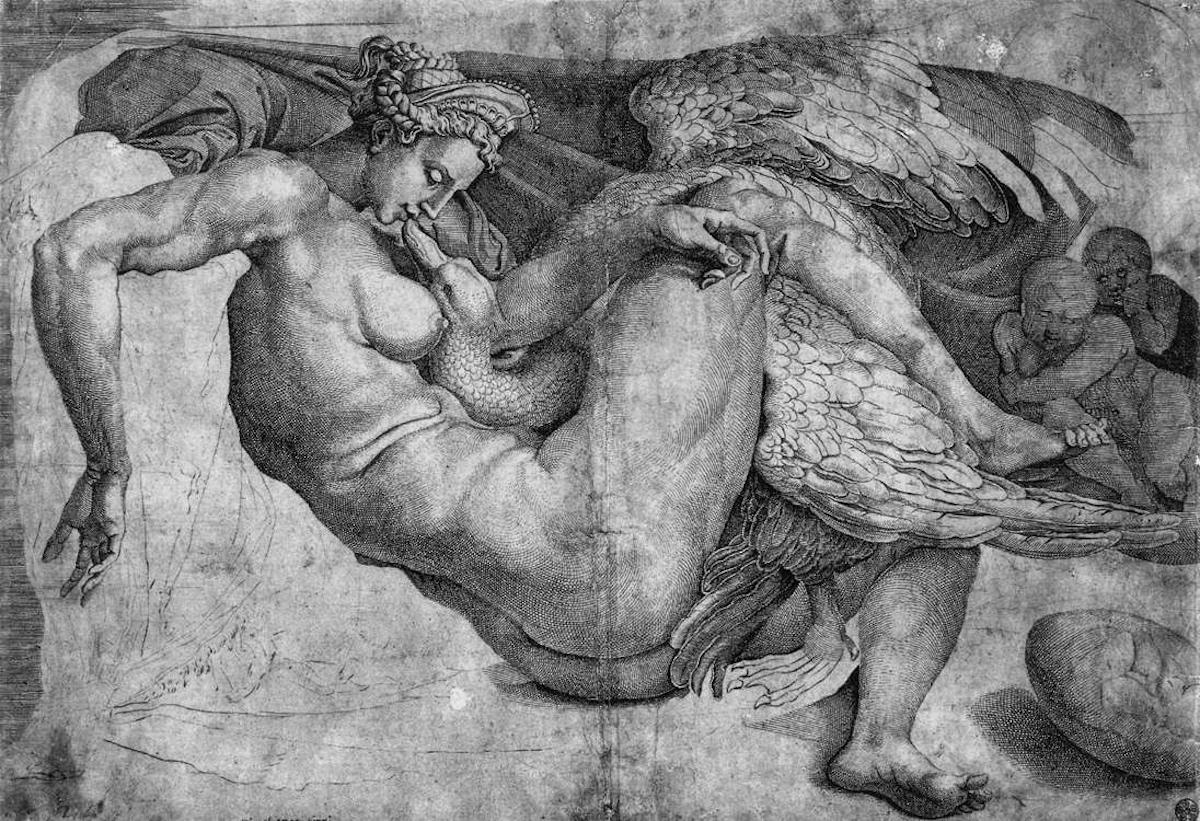
Leda and the Swan, engraving made between 1530 and 1550
In what is considered a book of architecture theory, Hypnerotomachia Poliphili, published in Venice in 1499, the myth is portrayed in one of the hundreds of woodcut illustrations. It shows Leda and the swan making love with gusto, on top of a Triumphal Car watched by a crowd. This event was called a Joyous Entry, the name used for a royal entry of the first peaceable visit of a reigning monarch into a city.
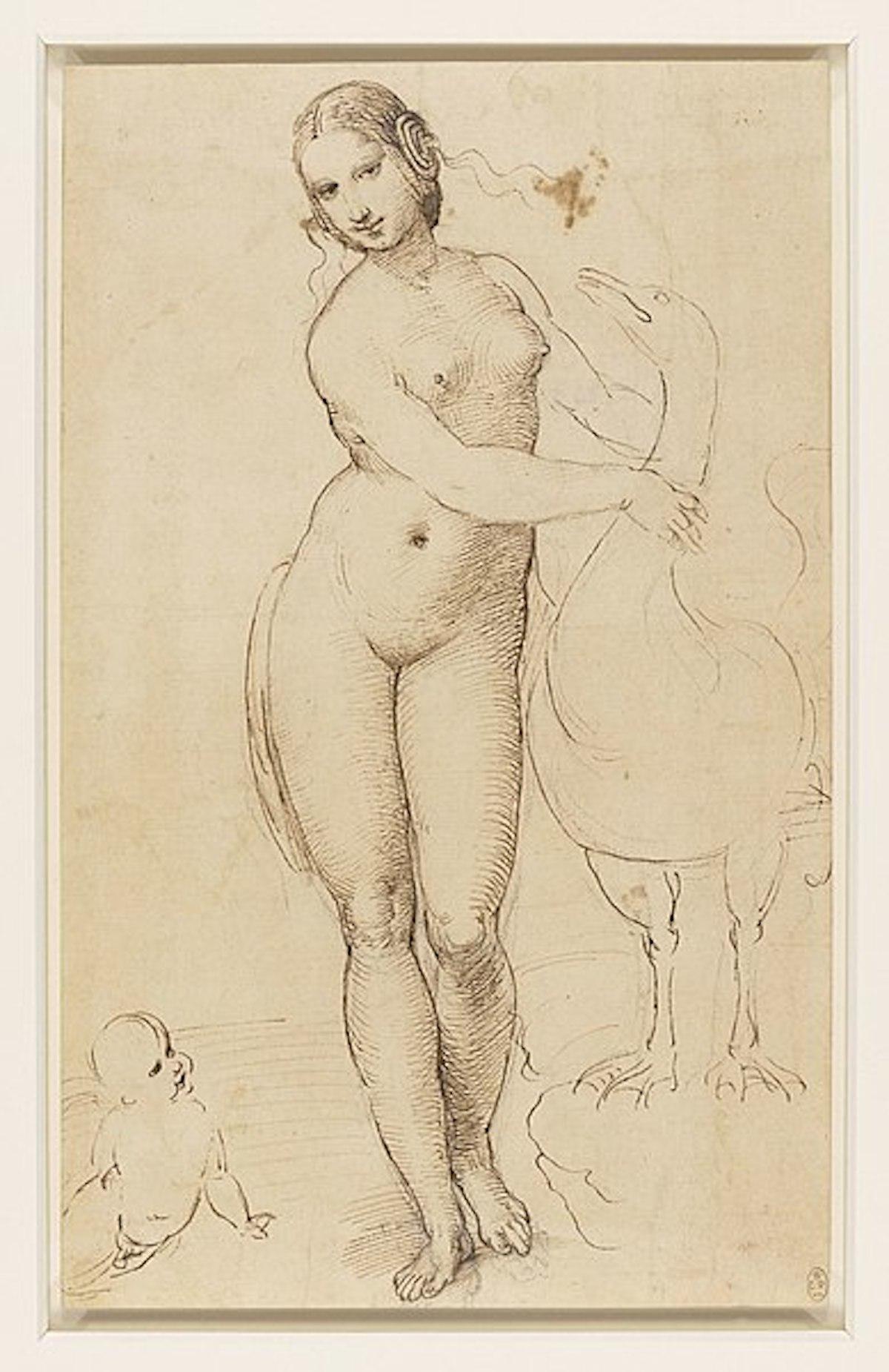
Raphael, Leda and the Swan, 1507, etching
In 1864, the French painter, Émile Auguste Hublin, painted an oil on canvas of a smitten Leda kissing a swooning swan. Cy Twombly, in 1962, painted a baroque, abstract version of the myth six times. One painting, Leda and the Swan, 1962, sold for nearly 53 million dollars at auction in 2017.
The large mixed media on canvas is done with pencil and crayon, as well as oil paint applied by hand, brush, and stick, showing hearts, a phallus, and a window. Twombly also completed ten large canvases, 50 Days at Liam, based on Alexander Pope’s translation of Homer’s Iliad, also in oil, oil crayon, and pencil, depicting the fall of Troy.
Other versions of the myth are the erotic avant-garde film, 7/64 Leda mit der Schwan, 1964 by Kurt Kren. The continuing power of this myth is shown in a series of striking engravings by Lynn Newcomb of Leda and the Swan in 2016. Rainer Maria von Rilke, in the poem Leda, ends with: “A swoop, /and his neck butting through her hands’ weak hindrance, /the god unloosed himself into love’s grip. /Then feeling in his feathers for the first time gladness, /the god became a real swan in her lap.”
